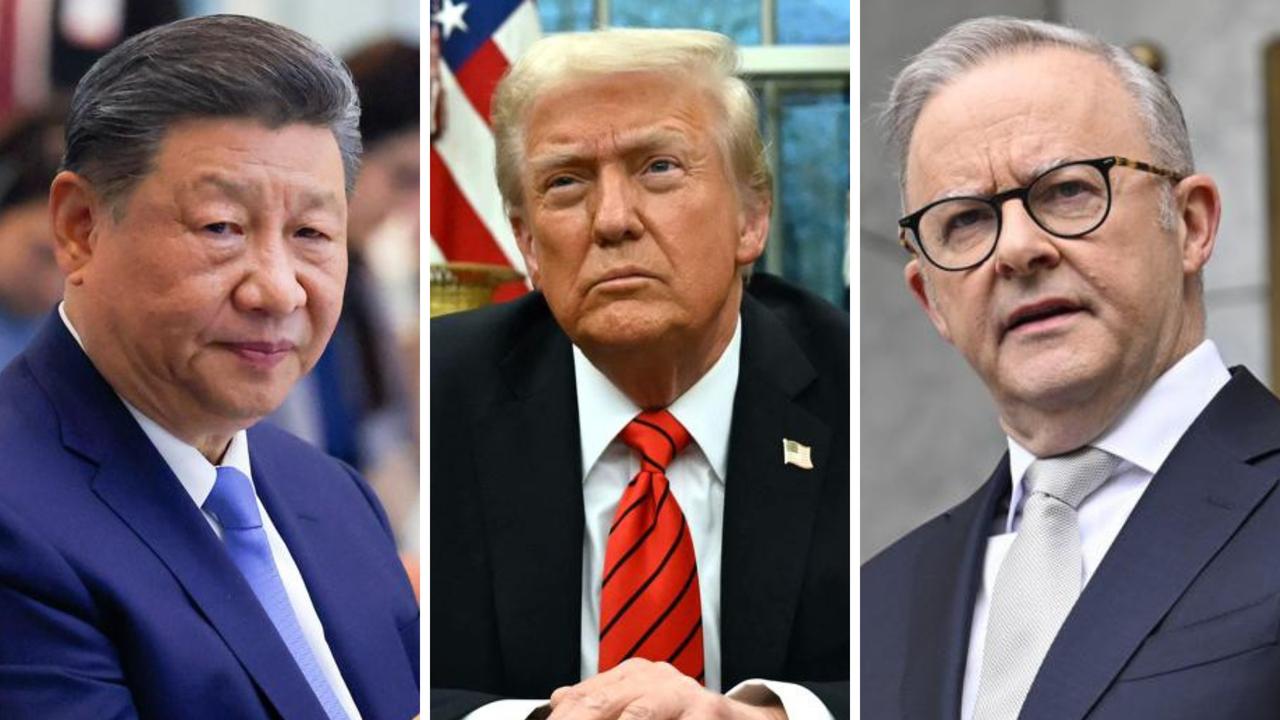Why North Korea and America could be at war in the next few months
THE Winter Olympics seems to have brought peace between North Korea and the US but this ceasefire could be shortlived.

OPINION
DESPITE some media outlets’ endless fawning over all things North Korea during the Winter Olympics, the catalyst that nearly brought Washington and Pyongyang to war last year — the murderous Kim regime’s quest for nuclear weapons and missiles that can strike the US homeland — is only growing more powerful by the day.
In fact, we seem destined to relive the tension-filled events of 2017 all over again. Know this: come April, the United States and North Korea could very well find itself at war as tensions are set to spike once more, Fox News reports.
RISING TENSIONS IN ASIA
Thanks to a unique set of overlapping events, it seems all but certain the détente brought about by the Olympics will end up being short-lived.
PyeongChang Games: Kim’s cruel penalty for failed N Koreans
First, we need to understand the fundamental problem that is pushing Washington and Pyongyang toward a potential military clash.
From North Korea’s perspective, the regime looks at nuclear weapons as the ultimate guarantor of its survival, even enshrined in its constitution.
Kim Jong-un correctly understands that his chances of some day ending up in The Hague for war crimes like Slobodan Milosevic or dead and buried like Mullah Omar, Saddam Hussein or Colonel Gaddafi rise exponentially without atomic arms.
For these reasons, Pyongyang is not likely to ever give up its nuclear weapons — ever.
This fact, above all else, is driving Northeast Asia toward a conflict the world has not seen in decades.
As for Washington, the Trump administration looks at North Korea’s nuclear weapons as an existential threat, with National Security Advisor H.R. McMaster even going as far as saying that the Kim regime is undeterrable.

Only complete nuclear disarmament and the elimination of North Korea’s missile programs will satisfy Washington.
With such profound disagreements driving the crisis, Washington is getting ready to enhance its “maximum pressure” campaign.
Vice President Mike Pence recently announced a new round of sanctions which will be unveiled in the coming days that will be “the toughest and most aggressive”.
Additionally, Washington and Seoul are set to begin their annual joint military exercises involving 230,000 troops — one of the largest such drills on the planet — at the end of April. With North Korea already complaining that such exercises are unacceptable and having already demanded their cancellation, such drills along with additional sanctions could very well see North Korea respond in dramatic fashion.
This is where we begin to enter the danger zone. Over the last several years, North Korea has conducted a series of missile tests that many times have started in March and go all the way through to the Australian spring.
While the North has not tested any missiles since November of last year, Pyongyang could use the excuse of annual US-South Korea military exercises to once again test their rockets before the drills commence.
Such tests could include a fully operational ICBM being fired deep into the South Pacific with a dummy warhead passing through the atmosphere and splashing down into the ocean.
North Korea, completing such a test, would prove to the world and the Trump administration that it could indeed hit the US homeland with a nuclear weapon, raising the stakes dramatically.

Then there is the nightmare scenario. The Kim regime could decide that it must test a fully-operational nuclear weapon to the world, or what many North Korea experts call the “Juche Bird”.
In such a test, North Korea would forgo a dummy warhead and fire off into a remote part of the Pacific a nuclear armed ICBM and detonate it.
Such a test, the first atmospheric atomic explosion since 1980, could very well be the spark that sets the Trump administration down the path to a war, or at least a “bloody nose” response.
WHAT SHOULD THE TRUMP ADMINISTRATION DO?
Knowing the timeline of events and how North Korea could respond, is it time for the Trump administration to change tack?
Should the administration, for example, cancel joint exercises and stop upping the pressure on North Korea?
Never. But it may be time to shift our thinking on what would be an acceptable outcome to this crisis.
Considering Pyongyang in the 1990s allowed its own people to starve and millions to die rather than slash its military budget, it is likely the Kim regime will do anything to develop its offensive capabilities.
If we accept the logic that North Korea will never give up its nuclear weapons, and we also accept that a war of choice against Pyongyang to disarm them would be too costly, we owe it to ourselves to find what I would call the least worst policy option.
As I have argued before, containing North Korea economically and diplomatically is that option. Washington will never, ever, accept a nuclear armed Kim regime, and we will make sure a price is paid for Pyongyang’s choices.
No one wants to see a regime that has prison camps three times the size of Washington, D.C. exist, let alone have nuclear weapons that can kill millions.
However, an aggressive long-term pressure campaign, one that unleashes economic warfare on North Korea, permanently damages its economy and denies the regime’s ability to give its elites the creature comforts they so desire, would see North Korea pay for its actions considerably.
Put another way: if North Korea wants nuclear weapons the price for those weapons must be made astronomically high.
But this also means that nations that continue to trade with Pyongyang or evade sanctions must be held to account.
If China and Russia, for example, continue to go around UN Security Council sanctions — sanctions they voted for — they must pay a price. That means sanctioning any individual, company or even banks that are profiting from such trade.
The Trump administration should even consider pushing back in areas of strategic interest to each nation — for China that means Taiwan and the South China Sea and for Russia Ukraine — to make sure we demonstrate the seriousness of our resolve and intentions.

To be brutally honest, none of the strategies outlined above will be easy. Such a pressure campaign could take decades to get North Korea to give up its nukes.
And to be even more honest, considering Pyongyang in the 1990s allowed its own people to starve and millions to die rather than slash its military budget, it is likely the Kim regime will do anything to develop its offensive capabilities.
That is why there must be an additional pillar to this maximum pressure strategy: shinning a giant spotlight on North Korea’s horrifying human rights record.
Along with a weak economy, this is Pyongyang’s second Achilles heel. Anytime the administration talks about the Kim regime, making its case for maximum pressure, the human rights of the North Korean people must be part of that conversation.
From Mr Trump’s powerful State of the Union message highlighting a North Korean defector to Mr Pence taking Otto Warmbier’s father to the Olympic Games, such pressure on the regime is something North Korea can’t counter.
If implemented to its maximum extent, North Korea will be pressured from all sides — and will likely push back even harder.
This is where the Trump administration must communicate the limits of what it will tolerate, preferably through private channels. For example, if North Korea were to detonate a nuclear weapon in the atmosphere, spreading radioactive fallout over a large area, such an action should be communicated as unacceptable and could very well trigger a military response.
GET READY FOR TROUBLE
When the Olympic flame fades from PyeongChang we should brace ourselves for what could be the most tension filled few months internationally we have seen since the Cuban Missile Crisis.
The challenge for the Trump administration is to navigate what will be a tense spring that could very well see the resumption of a conflict on the Korean peninsula that never truly ended and has the potential to claim millions of lives.
Through a mix of ingenuity and creativity and avoiding the siren song of war, America and its allies can contain and deter North Korea. It won’t be easy or cost free, but it is the best option we have to secure our homeland and our interests.
• Harry J. Kazianis is director of defence studies at the Center for the National Interest, founded by former President Richard M. Nixon
This article was originally published by Fox News and appears here with permission.



